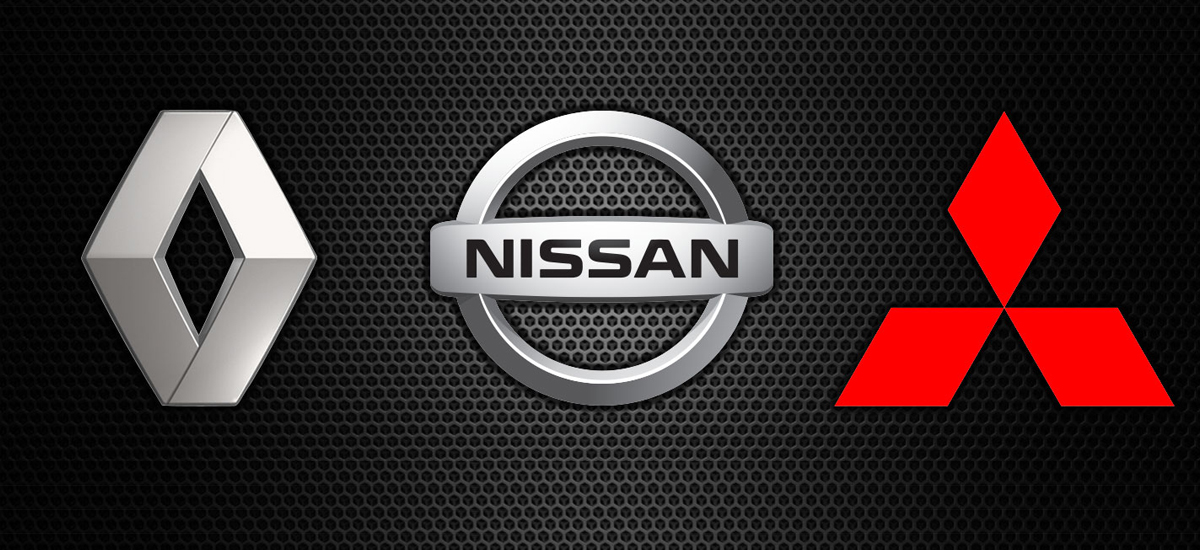
 Your Credit Estimate
Your Credit Estimate
 Your Credit
Your Credit
Your zip code helps us provide you with the most accurate vehicle pricing and vehicle availability.
We estimate your credit score to give you an idea of your monthly payments. To get an accurate payment amount, complete our credit application by clicking the Start Credit Application button below.
start credit application
During the 2018 Geneva Motor Show, we saw a lot of interesting concepts and vehicles revealed for their first debut. As the 2018 Geneva Motor Show comes to a close, we take a look back at one concept in particular - the EZ-GO by Renault, a futuristic concept that will undoubtedly take the form of an electric and/or autonomous vehicle. With the Renault being a part of the Renault-Nissan-Mitsubishi Alliance, we decided to take a look at what is going on with these three companies. Although connected, each is independent of the other; at the same time, the three companies are becoming interconnected and will be sharing platforms going forward.
Sales and Resources
One of the largest accomplishments for the Renault-Nissan-Mitsubishi Alliance is their sales. By the end of 2017, the Renault-Nissan-Mitsubishi Alliance surpassed the Volkswagen Group in total sales. With a total of 10.6 million units sold worldwide, with at least one million in each of the nine major auto markets in the world, the alliance has solidified their standing on a global scale in the auto industry. It would seem however, that the alliance knew this accomplishment was coming early on. In the fall of 2017, namely in September, the alliance made an announcement that would set high goals for the next five years.
A five-year plan dubbed “Alliance Ventures” is a new funding campaign by the alliance to invest $1 billion to support innovation, start-ups, and entrepreneurs in technology. Their main focus is on companies building autonomous systems, electric vehicles (EVs), connectivity, and artificial intelligence. $200 million of the funding campaign has already been allocated as the first year’s budget for investing in such companies.
In addition to the possible prophetic notions of the alliance to take such a chance with their money with this funding campaign, one can also look at the profits and savings the alliance has experienced since Mitsubishi was added to the fold. In 2016, when the initial alliance formed between the three, a total of $6.2 billion was claimed in savings between Renault and Nissan, sharing only two common platforms between the two. Now with Mitsubishi Motors also a part of the alliance, four platforms are said to dominate the vehicles produced by the alliance, and about nine million units will be produced by 2022 when considering Mitsubishi’s plug-in hybrid technology and future electric concepts.
Marching On
With this new funding campaign in the mix, the Renault-Nissan-Mitsubishi Alliance needs to have a solid game plan to come out on the winning end. A large chunk of the funding campaign is said to be set aside for a currently budding market - robotaxis. With autonomous self-driving car technology moving forward, ride-hailing services like Uber and Lyft may soon be replaced by a self-driving robotic fleet. Just last month (February 2018), Google Waymo’s self-driving Chrysler Pacifica Hybrid was approved as the first self-driving autonomous ride-hailing service in the world, with a permit to operate as a Transportation Network Company.
On top of this, the four platforms discussed above consist of Nissan, Renault, Mitsubishi, and Mitsubishi plug-in hybrids like the Mitsubishi Outlander PHEV. The way the alliance puts it - Renault holds a strong position in Europe that complements Nissan’s in China and America, Nissan also brings a premium luxury brand to the table from its Japan division (Infiniti), and the largest contribution by Mitsubishi will be its expertise in plug-in hybrids. At this time, Nissan only has one alternative fuel vehicle, the Nissan Leaf. By using resources and technology from Mitsubishi Motors, both Nissan and Renault will be able to expand their lineups with alternative fuel sources.
Before we wrap it up, take a look at the Nissan Leaf and the Mitsubishi Outlander PHEV. Being an electric-only vehicle, the Nissan Leaf is at a bit of a disadvantage, but has a total driving range of 151 miles. That’s more than double the now-discontinued (in North America) Mitsubishi i-Miev, with a total driving range of 62 miles. The 2018 Mitsubishi Outlander came to North America in late-2017, and it’s a pretty strong competitor when it comes to plug-in hybrids with a total driving range of over 500 miles.
Now take all of the concepts Mitsubishi has come out with in recent years, including the Mitsubishi e-Evolution and the Mitsubishi Electric Emirai4 that popped up at the 2017 Tokyo Motor Show. Both vehicles are electric, autonomous, and built to revolutionize vehicles on the road today. Nissan also showed up with its own electric, semi-autonomous vehicle concept, with a range of 400 miles. It would seem the cross-branding and tech-sharing has already begun within the alliance.
It seems we have a lot to look forward to with the Renault-Nissan-Mitsubishi Alliance. Interested to know more? Let’s chat about it on NowCar social media.